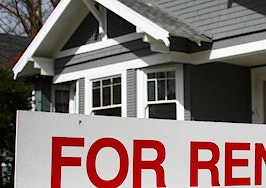- For two years, mortgage interest rates have confounded the experts -- falling to new lows despite predictions they would rise. Top economists still expect rates to reach or exceed 4 percent by the year’s end and soar to 4.5 percent or even higher in 2017.
- The reason? This year, inflation has become an important factor in the Federal Reserve's decision-making as the Consumer Price Index approaches the Fed’s trigger of 2 percent a year.
- Oil prices are the greatest contributor -- rising from a low of $25 per barrel in mid-January to $40 per barrel in April. Expect the Fed to resume raising rates at a moderate pace that will increase as the economy strengthens.
Why are leading housing economists such as Sean Becketti of Freddie Mac, Mike Fratantoni of the Mortgage Bankers Association and National Association of Realtors’ Lawrence Yun still worried about rates in the long term? Although Becketti has lowered estimates to 3.9 percent by the end of this year, he still expects rates on a 30-year fixed to hit 4.5 percent in 2017.
Fratantoni sees rates reaching 4.8 percent in the fourth quarter of next year. Yun is also forecasting mortgage rates to end this year at 3.9 percent — about where they were at the end of last year — but will rise to 4.6 percent in 2017.
Many events, including international financial instability and domestic mortgage demand, contribute to changes in mortgage rates. The most important factor is the Federal Funds Rate, set by the Federal Reserve’s Open Market Committee at its six meetings a year.
Even after the Federal Reserve raised rates last December for the first time since 2006, instead of rising, rates on a 30-year fixed rate mortgage fell to 3.58 percent by May 21 — the lowest level in three years. At its April meeting, the Fed took no action, but conditions are changing.
Why will rates rise in the months to come?
The answer can be summed up in one word: inflation.
Nothing sucks the wind out of an economic recovery like inflation, which is one reason the Federal Reserve monitors it closely. The Fed has an annual inflation target a rate of 2 percent per year; should inflation rise above that level, expect the Federal Reserve to raise rates more than it did in December. The most important factor driving inflation is oil prices.
At NAR’s Midyear Meeting, Yun said today’s low consumer price index (CPI), at about 1.7 percent, doesn’t reflect the rise in prices people see on everyday items because low gas prices have been keeping the broader index down. Excess supply kept oil prices low beginning in 2012 and contributed to the Fed’s decision not to raise rates.
Early this year, conditions changed. Gasoline prices shot up 8.1 percent in April. Even with all food and energy items removed from the index, the CPI has increased 2.1 percent year over. Low prices stimulated demand and world oil prices rebounded from a low of $25 per barrel in mid-January to $40 per barrel in April.
Driven by the politics of OPEC as much as the forces of supply and demand, oil production is difficult to predict, but demand will keep prices rising. Oil price inflation is expected to continue. In early May, the U.S. Energy Information Administration upped its forecast for the average price of crude in 2016 by $6 a barrel, from its April estimates of $34.73 per barrel to around $40.52.
How will the Federal Reserve react when it meets in June?
It answered that question at its April meeting: “Inflation is expected to rise to 2 percent over the medium term as the transitory effects of declines in energy and import prices dissipate and the labor market strengthens further … The (Federal Open Market) Committee expects that economic conditions will evolve in a manner that will warrant only gradual increases in the federal funds rate; the federal funds rate is likely to remain, for some time, below levels that are expected to prevail in the longer run.”
That’s why the smart money expects rates to continue to rise — gradually at first, and faster in the years to come.
Steve Cook is editor and co-publisher of Real Estate Economy Watch. Visit him on LinkedIn and Facebook.













